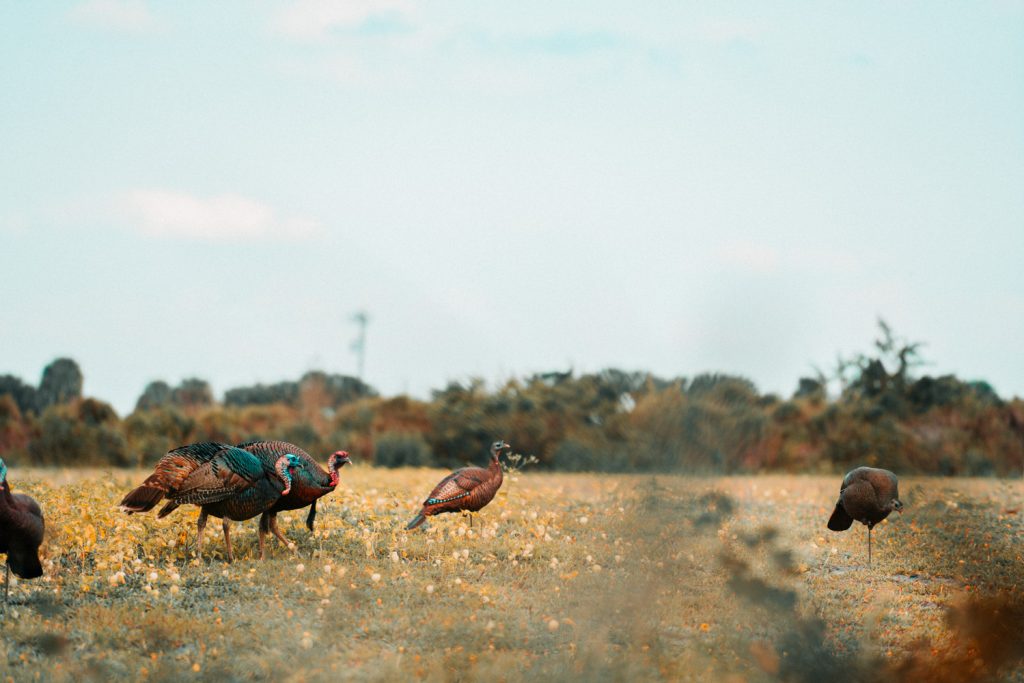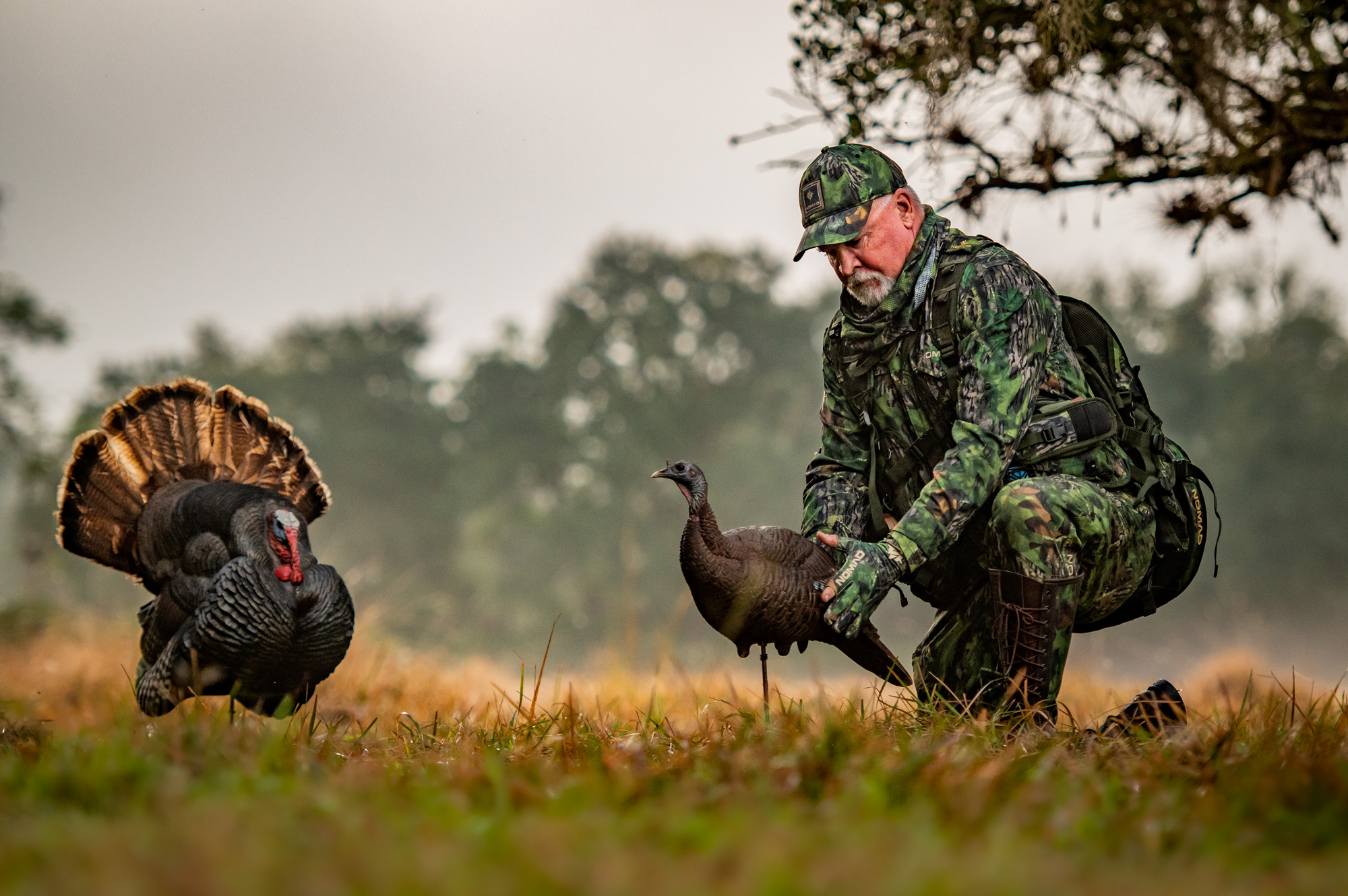Spring Decoy Strategies
Think before you grab those fakes this spring.
Your decoy strategy should reflect the stage of the breeding season and mimic the natural social structure of turkeys at that time.
Early Spring
Turkeys might still be in large groups, and gobblers in many areas of the country will be henned up. Go with a larger spread, including two or three hens and a strutter or jake decoy.

Make sure the hen decoys look natural and relaxed. Use one or two feeding hens with an upright hen. That mimics a flock of contended birds. Conversely, a spread with two or three upright hens looks like a group of alarmed turkeys.
Strutting or jake decoys can provoke strong reactions from gobblers during this period. Pay close attention to how turkeys respond. If toms seem to shy away from gobbler decoys, consider pulling them from the setup. Likewise, if your hunting area seems to have a large jake population, you might want to stash the jake decoy.
Mid-Spring
After turkey flocks seem to be broken up, pare your spread down a bit. Many hunters go with one or two hens — at least one should be feeding — with a strutter or jake. And again, watch how gobblers react to your gobbler decoy. Those often work best earlier in the season, when birds in large groups battle for social pecking-order supremacy.
Late Spring
By this time, turkeys have spread throughout their habitat, and many hens are nesting. In response, savvy hunters often use just one hen decoy.
Still, don’t be afraid to try a jake or strutter with the hen. Gobblers — especially older birds that suddenly find themselves without female company — might react strongly to the sight of an interloper.
In General
Use decoys to your advantage, but don’t rely on them. In open areas, they’re great for attraction and provide visual reassurance for your calling. After all, a gobbler won’t come to an invisible hen it instinctively knows it should see. Decoys don’t work as well in the woods, however.
Use the most realistic decoys you can afford, but they don’t have to break the bank. Many manufacturers offer great-looking fakes at reasonable prices. Also, use decoys that twirl or pivot naturally on their stake, imparting movement into a spread. Sometimes, that life-like turn or spin can convince a skeptical gobbler he’s looking at real turkeys.
And as always, remember the NWTF’s rules on safe decoy usage. You want to focus on a longbeard in your decoys, not constantly look over your shoulder.
